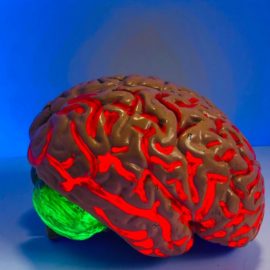

This article is an excerpt from the Shortform book guide to "Getting the Love You Want" by Harville Hendrix and Helen LaKelly Hunt. Shortform has the world's best summaries and analyses of books you should be reading.
Like this article? Sign up for a free trial here .
What is Getting the Love You Want about? What should you take away from the book?
In Getting the Love You Want, Harville Hendrix and Helen LaKelly Hunt suggest that we unconsciously seek out romantic partners to help us resolve unfinished business from our childhood. Hendrix and Hunt designed a process to change the way couples interact and transform their lives into a conscious union.
Read below for a brief overview of the book Getting the Love You Want?
Getting the Love You Want
We all have a deep-rooted need to be loved, but often a rift opens between our romantic partners and ourselves. Over time, we may even resent the traits in our loved ones that initially brought us together. Why does this happen, and can anything be done to rescue a relationship in a downward slide?
In the book Getting the Love You Want, therapists Harville Hendrix and Helen LaKelly Hunt suggest that we unconsciously seek out romantic partners with characteristics that resemble those of the first people we loved—our parents. In essence, our unconscious mind chooses a mate who will help us resolve the wounded parts of our childhood. When our partners fail to meet our unconscious expectations, we grow unhappy without knowing why, and our relationships fall apart.
But it doesn’t have to be that way. According to the authors, by becoming aware of the subconscious needs that drive what we expect from our significant others, we can engage our conscious mind to take control of our relationships. We can learn to recognize when a present-day conflict is reopening old, forgotten childhood wounds. We can choose to change defensive, knee-jerk reactions into thoughtful, understanding responses. Most importantly, we can become the people our partners need us to be. By doing so, we heal ourselves in turn.
From 1977-1988, Hendrix and Hunt co-developed Imago Relationship Therapy. It’s a response to the failure of the models of marriage counseling prevalent at the time.
The Legacy of Childhood
When a relationship starts to falter, it’s easy to blame your partner. Often, you’re not even consciously aware of the specific hidden needs you expect them to fulfill. To understand the unconscious drives that you bring into a romantic relationship, it’s important to examine your childhood frustrations as well as those of your significant other. Hendrix and Hunt propose that the process of mutual self-discovery will shine a light on your unmet childhood needs. It will become the first step in transforming you and your partner from antagonists into allies on the road to rebuilding your relationship.
The Pattern of Romantic Relationships
Now that we understand how and why we select romantic partners, how do those same unconscious patterns drive our relationships as we move forward?
Your subconscious mind thinks it has found a “perfect partner” who will resolve all your issues from childhood. In their book Getting the Love You Want, Hendrix and Hunt state that you’ll naturally experience an emotional high, followed by an inevitable slide to disappointment as the reality of your partner’s imperfection sets in. Much like the structure of a novel or a play, a relationship is marked by an intense emotional rise, an unexpected turn, and a downfall into conflict.
Learning to Talk to Each Other
As we can now see, unconscious needs bring couples together, while unconscious reactions drive couples apart. To bridge the rift, you both have to bring your needs and reactions to the forefront of your conscious, rational minds. To enable this, Hendrix and Hunt created a structured way for couples to communicate, called the “Imago Dialogue.” As a scripted format, this dialogue embodies mirroring your partner’s statements to ensure that you’ve understood them correctly, validating their point of view, and responding with empathy for their emotions.
The Path to Healing
To transform a broken relationship, the authors stress that each partner must feel emotionally safe. You must learn to see each other as separate individuals. Then, you’ll gradually change to become the person your partner needs you to be. In making this change, you’ll eventually discover that you’re healing yourself as well.
To enable this to happen, Hendrix and Hunt devised a program of exercises around the core concepts of mirroring, validation, and empathy. These exercises fall into three broad categories designed to create feelings of mutual safety, and explore your childhood needs and frustrations:
- Create safety for growth
- Learn each other’s trust
- Mutual Transformation
The Work Never Ends
Though Hendrix and Hunt’s process in their book Getting the Love You Want begins with a couple in crisis making a time-limited commitment, if you’re able to bridge the divide that’s grown between you and your partner, then the cycle of growth and change will never stop. The endgame of Imago Relationship Therapy is not to produce a perfect “happily ever after,” but to change the way you and your partner interact so that you may continue to evolve and support each other over the years to come.
To implement this change, they suggest that you strive to eliminate your negative reactions to each other, push through the inevitable periods of back-pedaling, and apply conscious, thoughtful communication in every aspect of your relationship.

———End of Preview———
Like what you just read? Read the rest of the world's best book summary and analysis of Harville Hendrix and Helen LaKelly Hunt's "Getting the Love You Want" at Shortform .
Here's what you'll find in our full Getting the Love You Want summary :
- Why rifts often open between your romantic partner and yourself
- How your childhood defines your future relationships
- How a struggling couple can learn to talk to each other, heal, and grow






